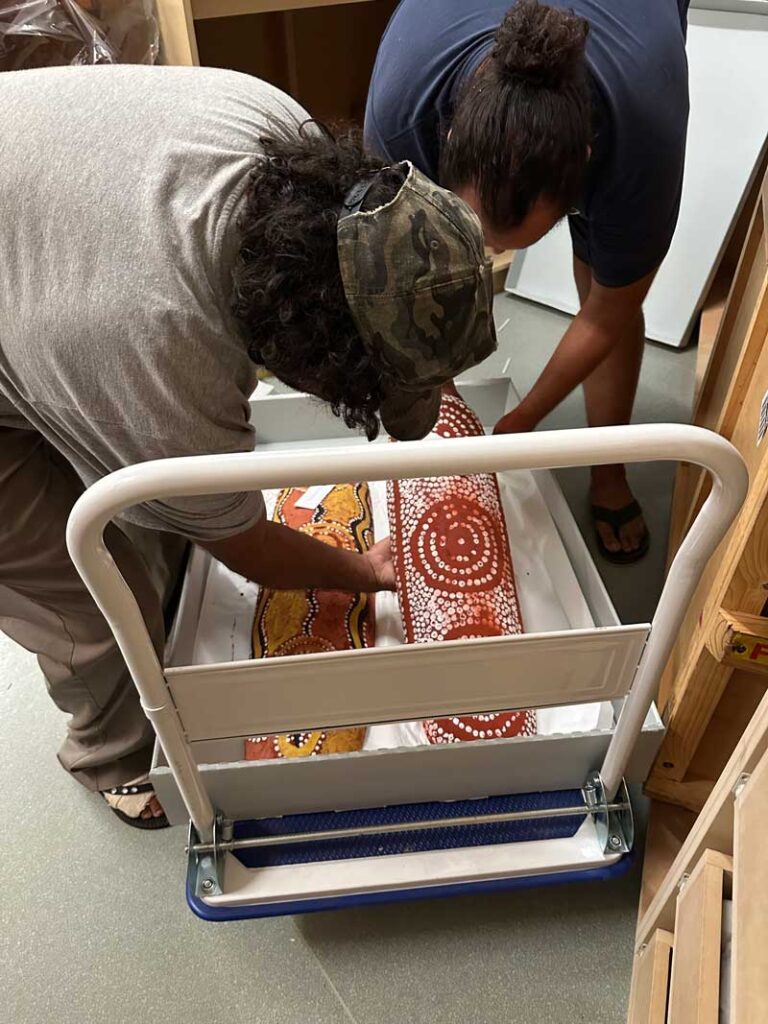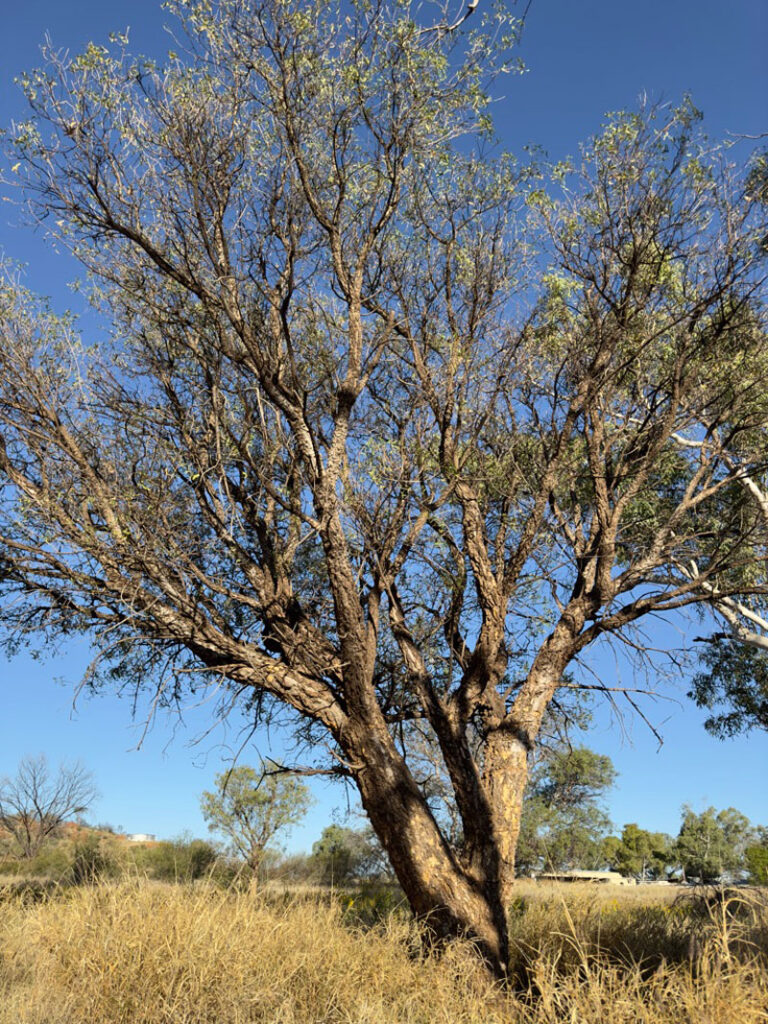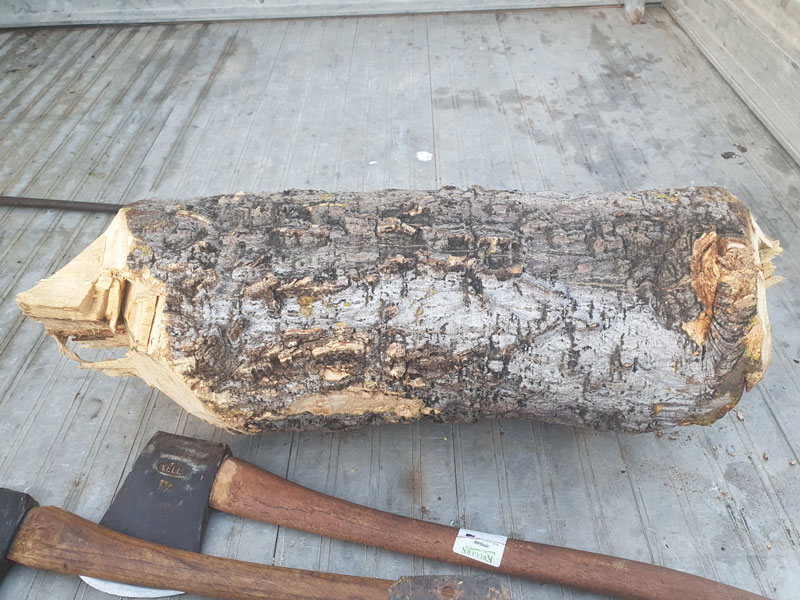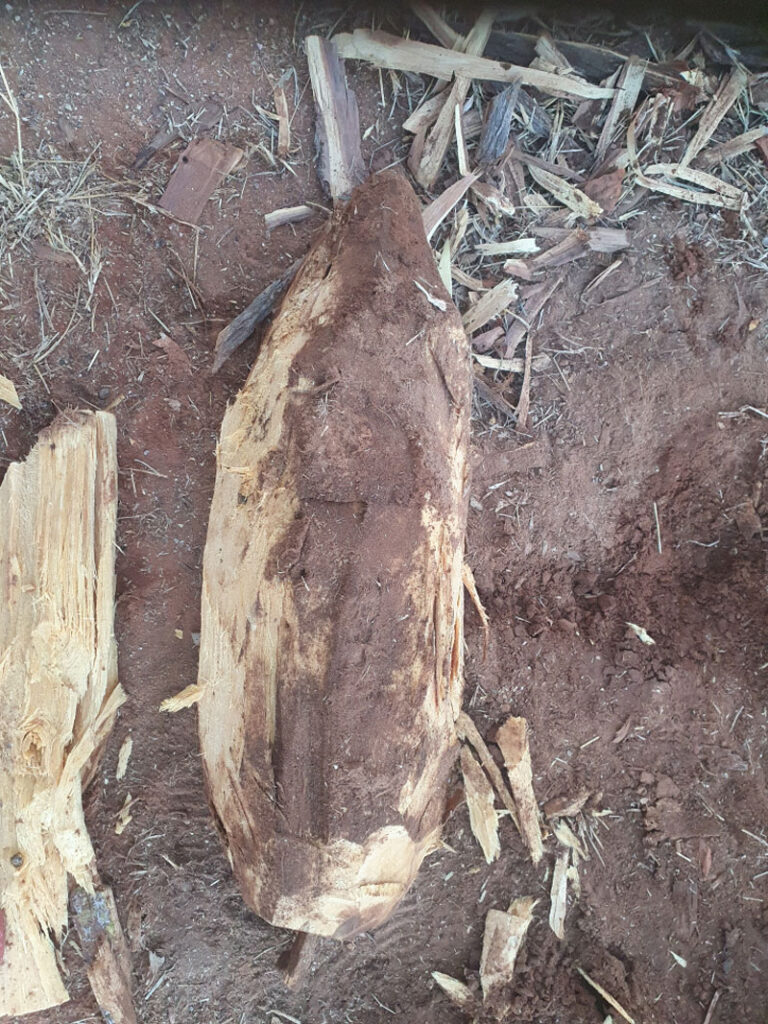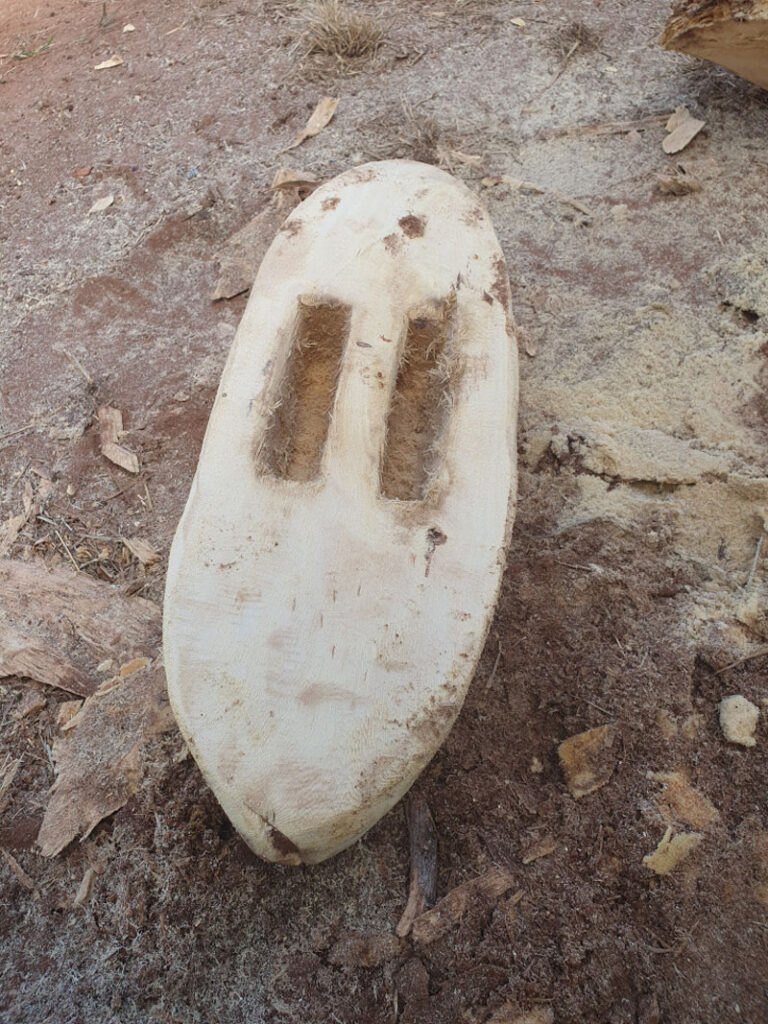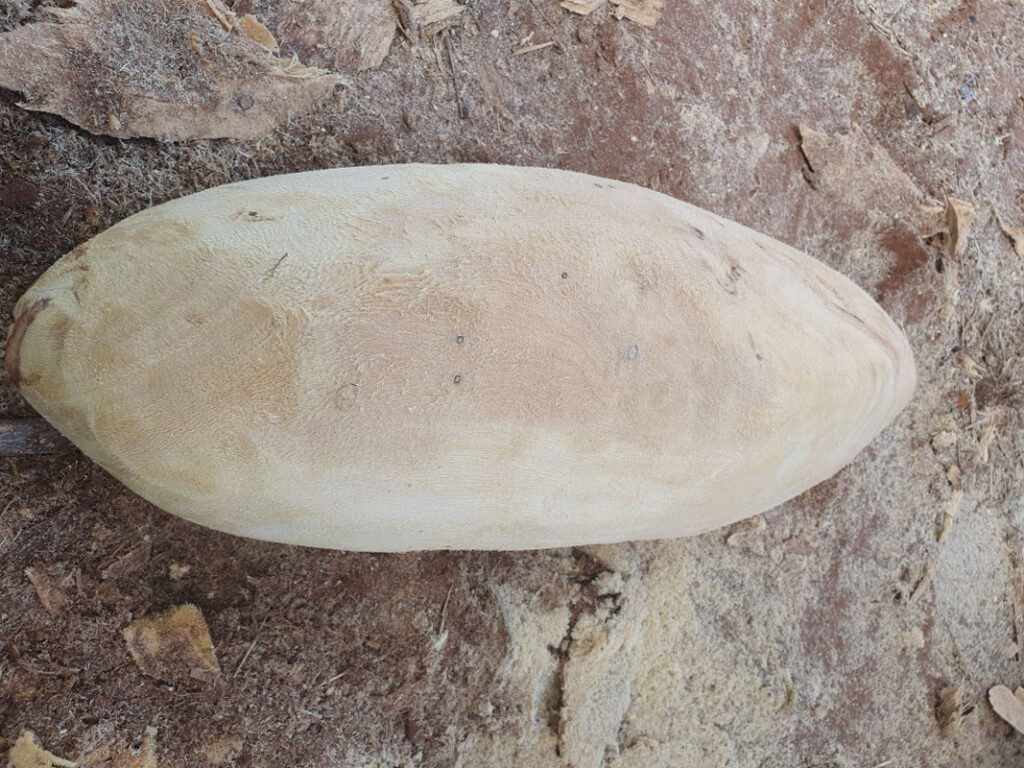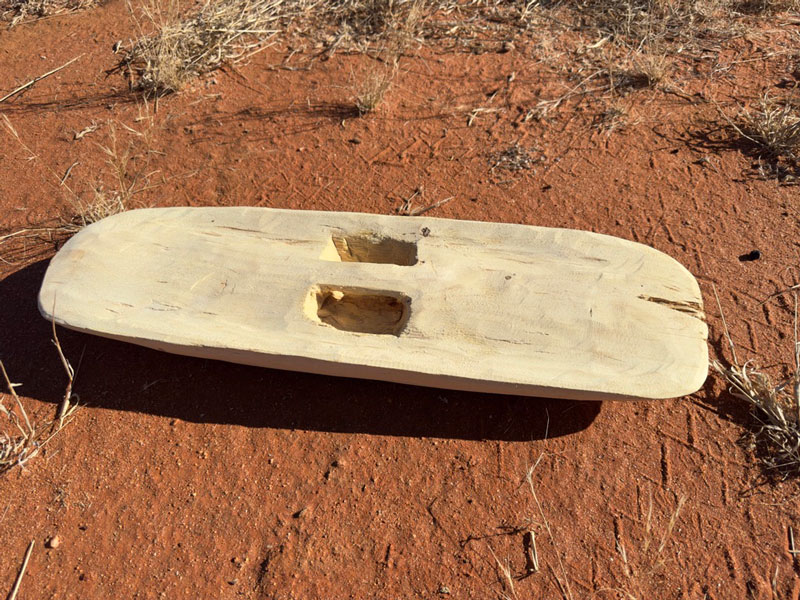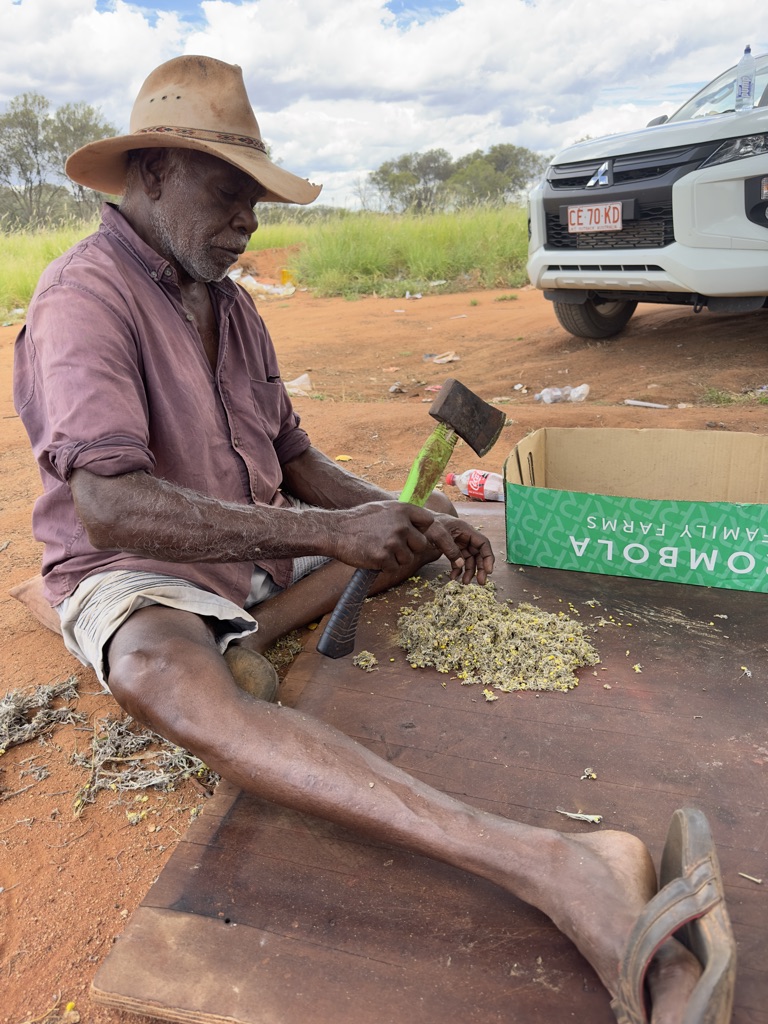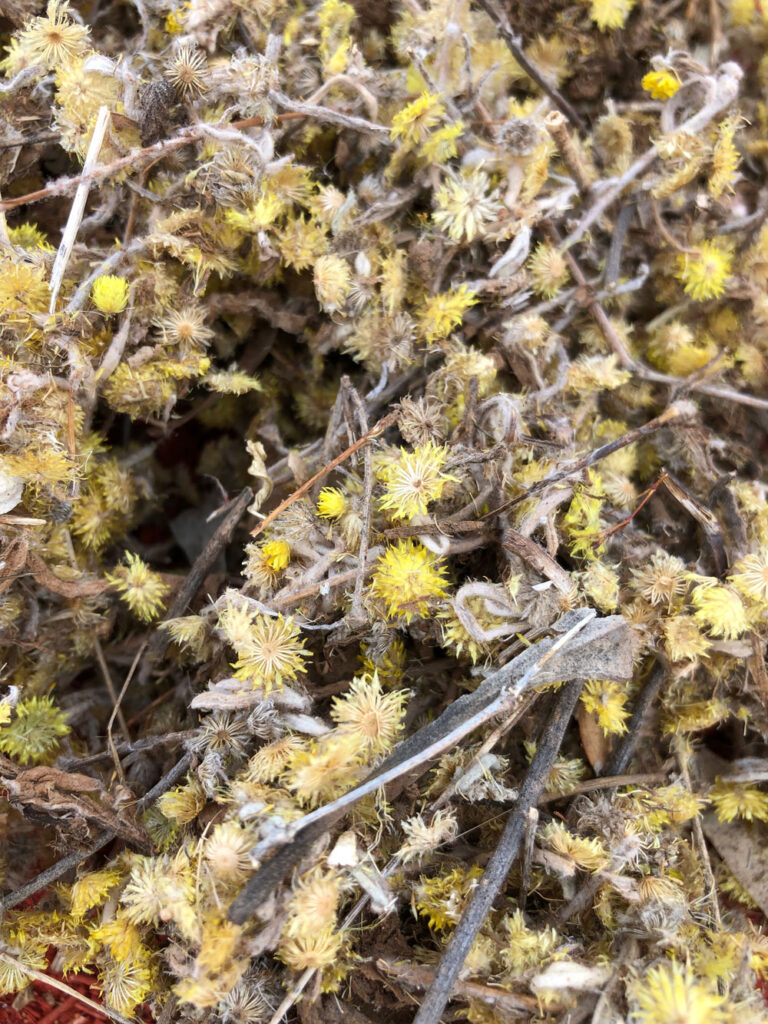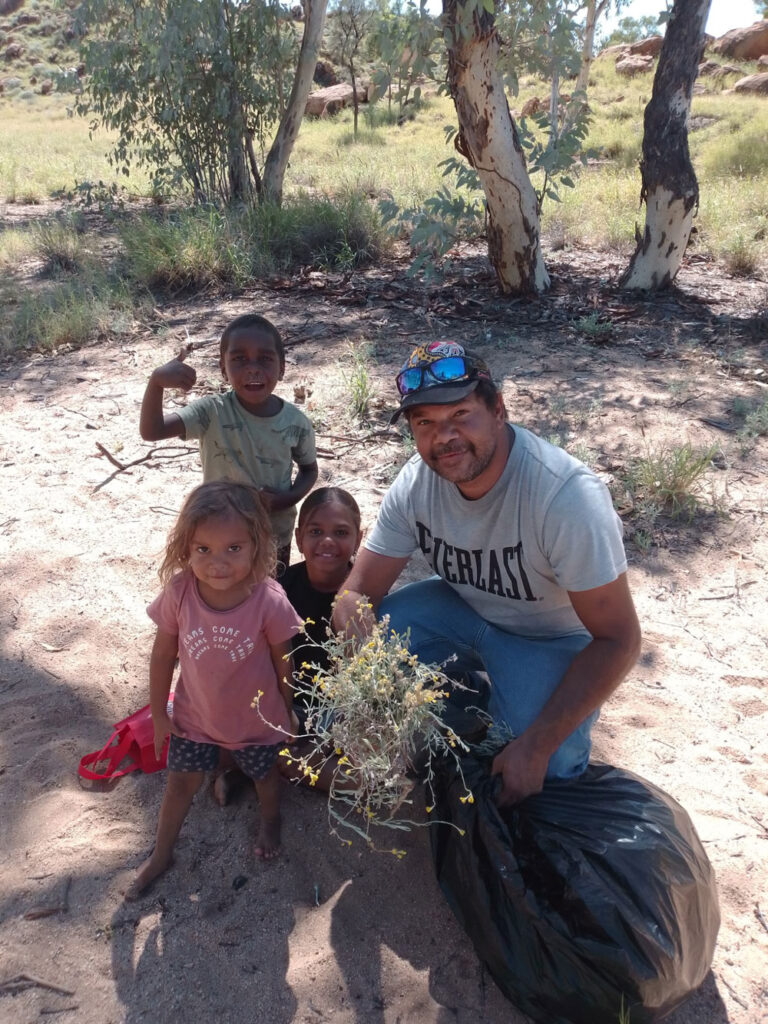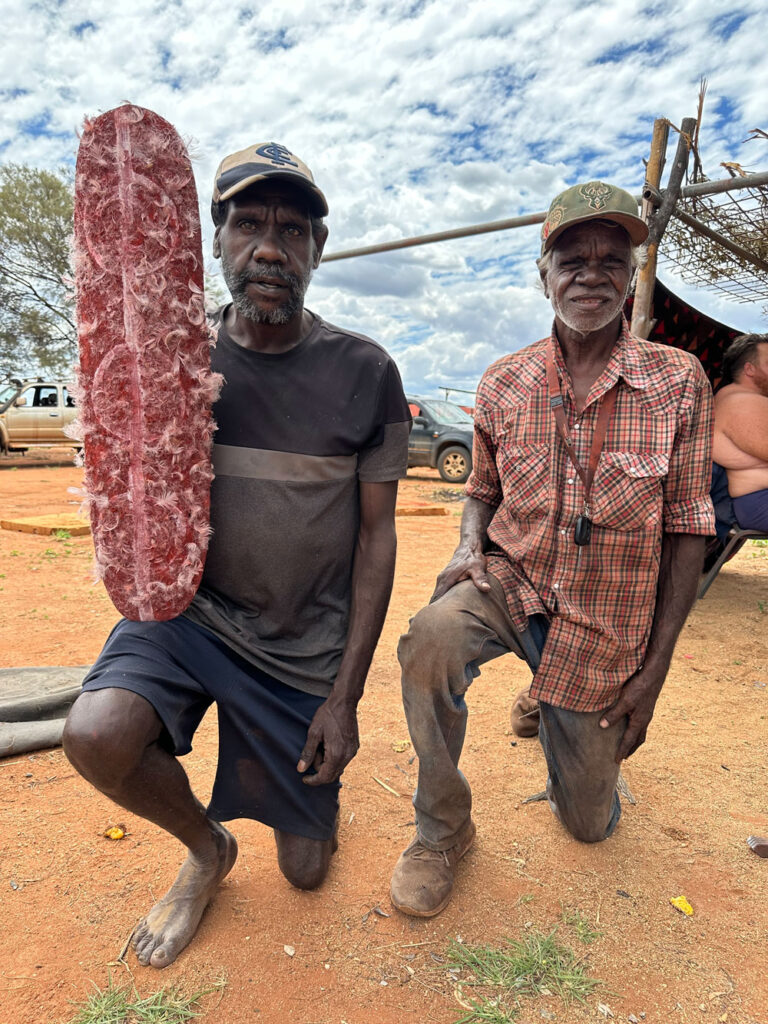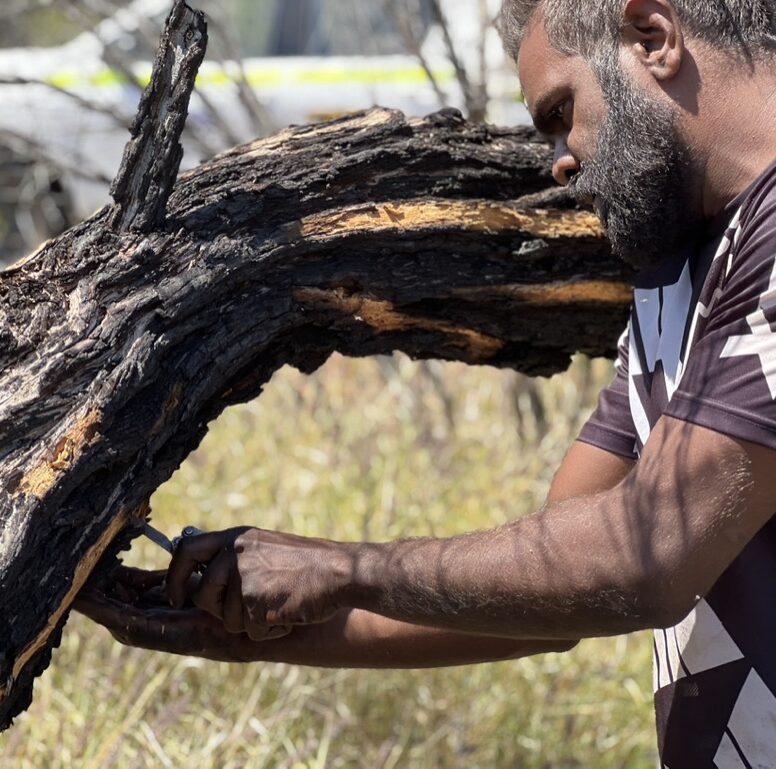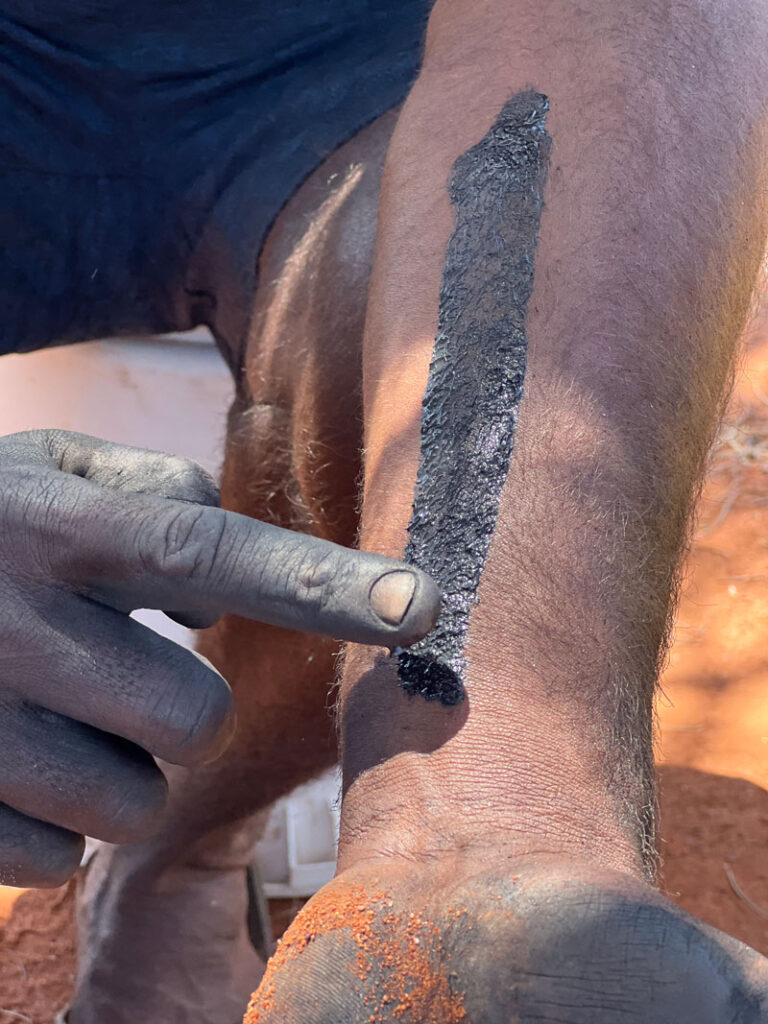Alkwerte Arlkeny Arenem
Decorating Shields
This alkwert (shield) is an important one. It’s not only for men’s side but for the generations coming. When they grow up, they can look around and ask, ‘What story belongs to my grandfather, or from my father or uncle?’ They have got to ask this, because if they’ve got no story or design, well there is nothing. People have got to have a story, even if it is only a little bit of story. Shield designs like this are important for everybody, old people, middle aged people, younger people, and children just coming up.
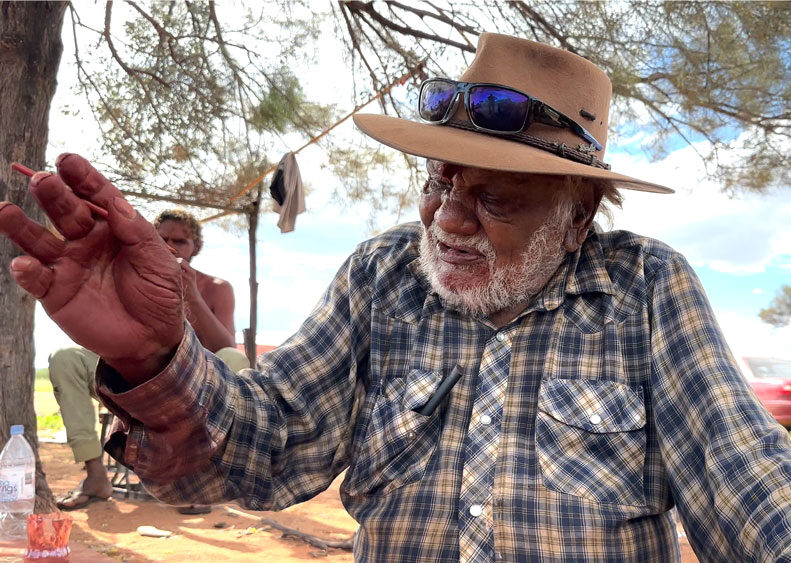
Creating shields
from the Beanwood tree
Ceremonial shields in Anmatyerr country are typically made from atywerety (Erythrina vespertilio, bat’s wing coral tree). These trees grow throughout Anmatyerr country and are perfect for making shields due to their soft and light weight timber. Shields for the Ingkantety project were either donated by Anmatyerr elders or commissioned from the Alyawarr artefact maker and advocate for men’s health, Michael Apwerl Liddle.
Shield
decoration
The decoration of shields today can involve both older, more traditional methods in combination with more recent innovations. The shields are first cleaned and then covered with red orchre. After this they are decorated with designs that are owned by different family groups, known as merek-artwey, those that inherit ownership of the land through their father’s line. Their kwertengerl, meaning those connected to that Mer (Country) through their mother’s and mother’s brothers. The kwertengerl assist oversee the painting to make sure that the correct designs are used, and the correct songs are sung from that Anengkerr (ancestral story).
The shield designs are added to the shield surface by either painting them on with traditional pigments or sore-bought acrylic paints. In some cases, however the shields designs are created by applying a chopped-up daisy known as anteth mpay-mpay. Anteth mpay-mpay is most commonly made from the yellow button daisy (Chrysocephalum apiculatum kason).
The daisy, although becoming hard to find on Anmatyerr Country due to over-grazing from cattle and an increased prevalence of buffel grass, is harvested and then chopped-up with axes until it forms into a fine and soft substance. Any coarse or sharp pieces are removed from the mix before adding in a colourant. White anteth mpay-mpay can be made by mixing it with atywerlk (white ochre) or even white flour and red coloured anteth mpay-mpay is made by mixing with rlpwa (red ochre) or store-bought red oxide. Men can also use anteth mpay-mpay to decorate their bodies and/or ceremonial objects. Anteth mpay-mpay is applied to shields, bodies, and objects, using a sticky substance such as sugar mixed with water.
When not using anteth mpay-mpay, the shields are painted with either acrylic paints or pigments made from atywerlk (lime or white clay), karntewarr (yellow ochre) or rlpwa (red ochre). Black paint is also made by burning bark from the ntywey (Hakea chordophylla or divaricata, corkwood tree). The cooled burnt bark ashes are then ground-up and mixed with water to produce a think black substance suitable for decorating bodies and objects.
Making Our Own
Collection
The community are now working with the staff at the Strehlow Research Centre and the Museum and Art Gallery of the Northern Territory to establish the Anmatyerr Cultural Materials Collection.
This collection has been catalogued and documented by the team and is being stored at the Strehlow Research Centre under a third-party storage agreement.
The community retain legal ownership of the collection under specified conditions whereby community members can remove objects from the collection and return as they see fit. For example, men have already used some of the collected shields in ceremonies at Laramba in early 2024. These were later returned to the SRC for safe keeping.
Many central desert communities, like Laramba, do not have art centres or museums where they can story important objects. The Strehlow Research Centre already holds a large collection of Anmatyerr material recorded in the twentieth century. This new collection will add to this older one.
